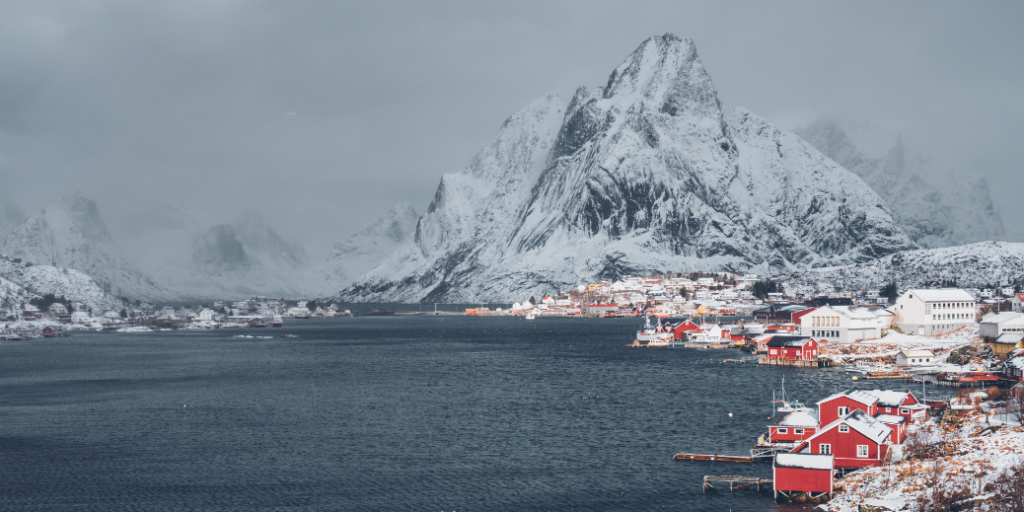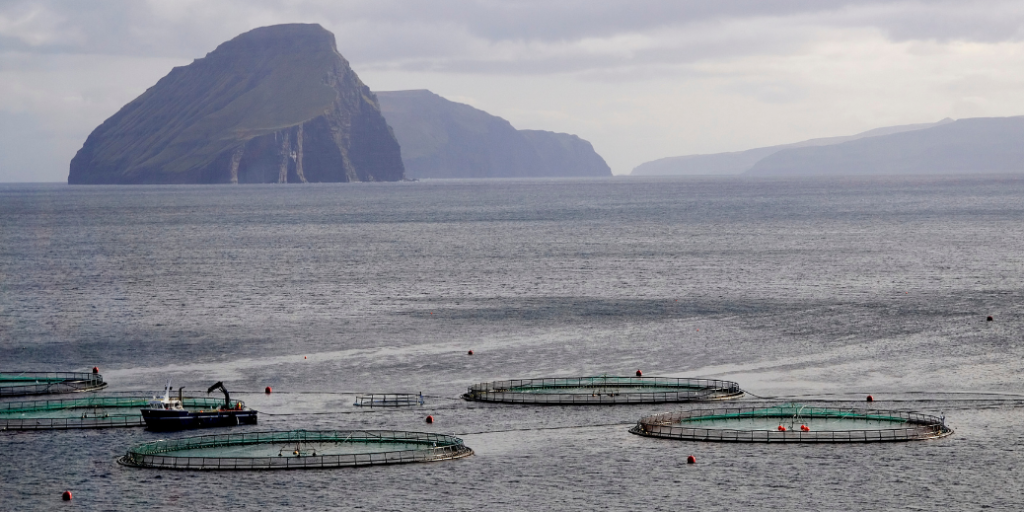Atlantic Salmon: Industry Facts & Innovations

No year is the same. Whether it’s developments in salmon farming and processing or trends in consumer behavior, our industry is constantly evolving. In this blog we discuss the latest developments and changes within our industry, as well as some forward-looking perspectives that reflect the mission and vision of Visscher Seafood.
About 80% of the world’s salmon harvest is farmed. Farming mainly takes place in large nets in sheltered waters like fjords or bays. Most of the farmed salmon Visscher Seafood processes comes from Norway. Salmon is considered a healthy food due to its high content of protein and omega-3 fatty acids.
Meat Consumption
Meat as a food source has become more and more important. Since 1960, supply per global capita has more than doubled, and the seafood segment is a big contributor to this increase.
Even though 70% of the Earth’s surface is covered by the oceans, fish accounts for only 7% of the protein sources produced for human consumption.
The UN estimates that by 2050, global population will grow to approximately 9.8 billion. Assuming protein consumption per capita does not change, this implies an increase in protein demand of 28%. Translating this to product weight, this means an increased consumption of 133 million tonnes of animal and fish meat.
The Growth of Aquaculture
Over the past decades, there was a huge increase in total and per capita fish supply. Aquaculture is a major contributor to this, as it is the fastest growing animal-based food producing sector. The growth of the aquaculture industry also outpaces population growth. Since 2016, aquaculture has been the main source of fish available for human consumption.
Effects of COVID-19 on EU Consumers
From 2019 to 2020, consumer expenditure on fishery and aquaculture products grew by 17%. The increase was most likely the result of closures in the hospitality sector due to the COVID-19 pandemic, and the increase of at-home consumption.

Aquaculture in Perspective
In 2020, aquaculture accounted for 86 million tonnes destined for direct human food consumption. Despite the growth in seafood consumption and an increase in production of Atlantic salmon of more than 1000% percent since the 90’s, the total global supply of salmonids is still marginal compared to most other seafood categories. Salmonids accounts for 4.6% of global seafood supply. Whitefish is about eight times larger and comprises a much larger number of species. Tilapia and Alaska pollock dominate the harvest/catch volumes of fish for human consumption.
The general supply of seafood in the world is shifting towards aquaculture. As the supply from wild catch is stagnating for several important species, farmed salmonids are increasing. In 1999, total supply of farmed salmonids first dominated supply of wild salmonids.
Regions
Atlantic salmon farming has traditionally been dominated by a small number of farming regions – Chile, Norway, Canada, and Scotland – as several natural conditions often have to be present to ensure optimal salmon farming production. Such conditions include: cold water temperatures varying between 8°C and 14°C (46°F – 57°F), a sheltered coastline, and optimal biological conditions. Today, salmon farming is also taking place in Australia, Faroe Islands, Iceland, Ireland, and New Zealand.
Innovations: Larger Smolts
The salmon farming production cycle lasts about 3 years. The first year of production takes place in controlled freshwater environments, and then the young salmon (smolt) are transported to seawater cages. Traditionally, seawater-ready smolt weighted an average of approx.. 120 grams. The most recent development in this production chain is that salmon farmers are researching the possible benefits of producing bigger smolt. The large-scale expansion of onshore facilities makes it possible to keep salmon longer in closed-containment systems, thereby producing bigger smolt. The intention is to reduce the time salmon spend in marine pens, thus reducing the prevalence of salmon lice and disease. As of summer 2022, salmon producers are still developing the sustainability of smolt farming of large salmon smolt.

Record High Prices
In the first four months of this calendar year, Norwegian salmon price has increased by 49%. Compared to April 2021, the prices for Norwegian salmon in April 2022 surpassed last years prices with 71%. The extreme price increases are attributed to declining Norwegian biomass caused by high feed costs leading to under-nutrition in some regions. Hesitant business operations during the height of the COVID-pandemic in some important farming regions also contributed to the current shortage. Higher-than-average fish mortality rates are also prompting some early harvests, consequently reducing the portion of larger-sized fish (>5kg) and further inflated salmon spot prices. Moreover, Norwegian frozen inventories were said to be at some of the lowest levels recorded in almost two decades.
Looking Forward
Thanks to our direct connections with salmon farms in Norway, Scotland, Ireland and Iceland, Visscher Seafood will continue to invest in these relationships as the market cools down. The ownership of our own Scottish salmon farm Organic Sea Harvest, the close relationship with our VÅRLAKS farmers and the partnership with Scottish Steelhead Trout producer Kames makes all the difference. Developments and changes in consumer needs are factors to which we continue to adapt our business operations. Examples of this are our 10K OTR vacuum packaging and the increasing demand in our industry for portions instead of whole fillets due to staff shortages in the hospitality industry.